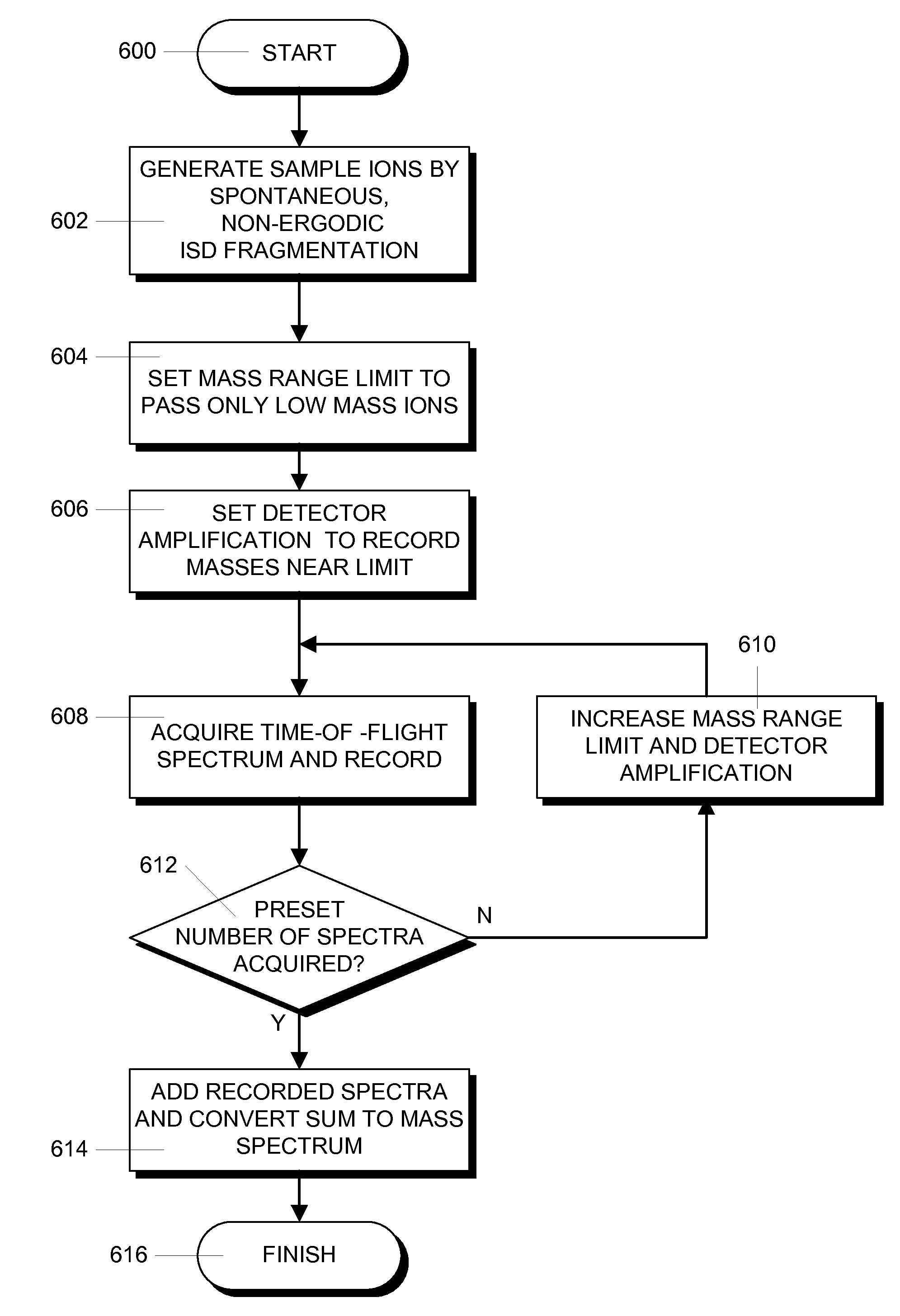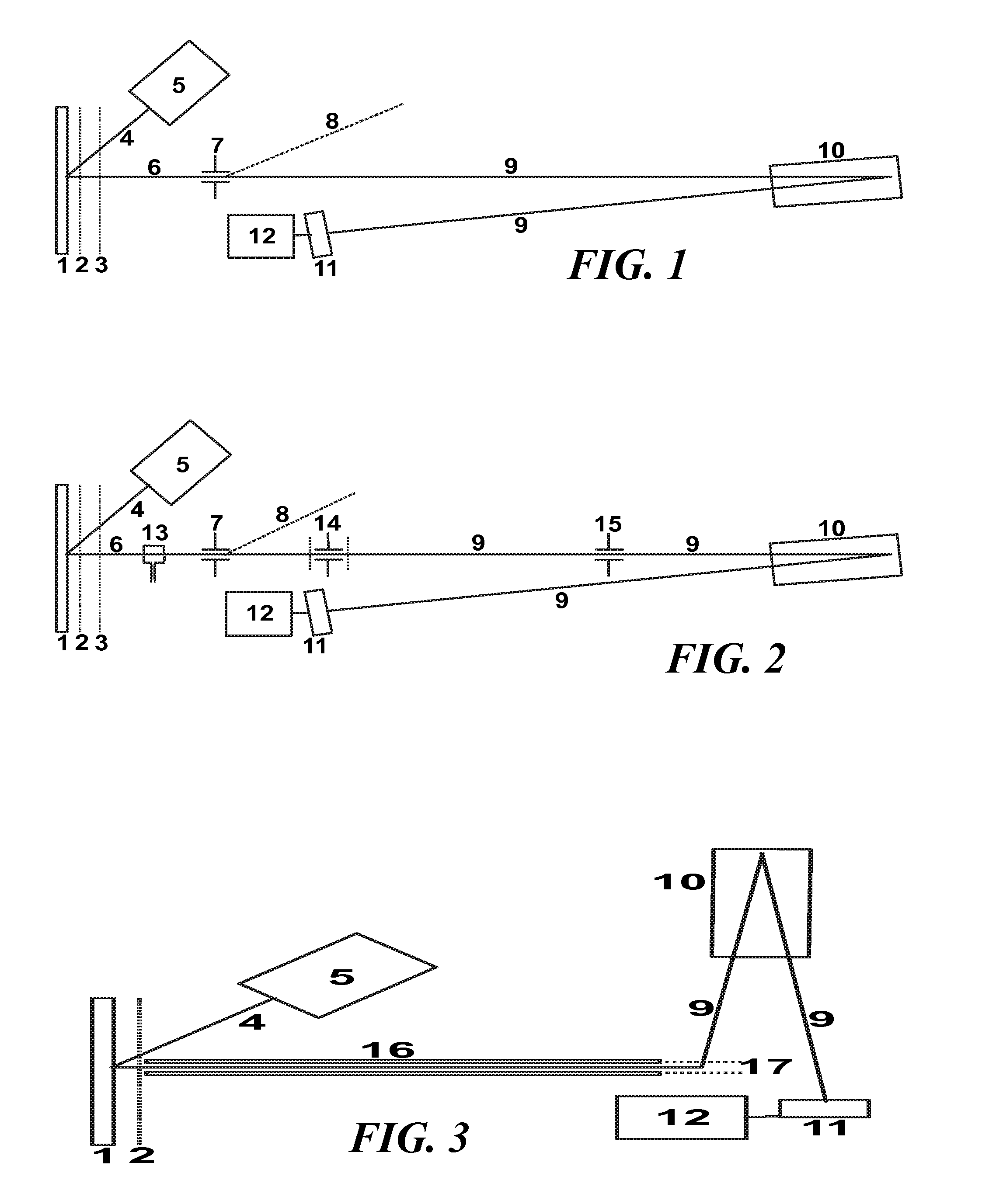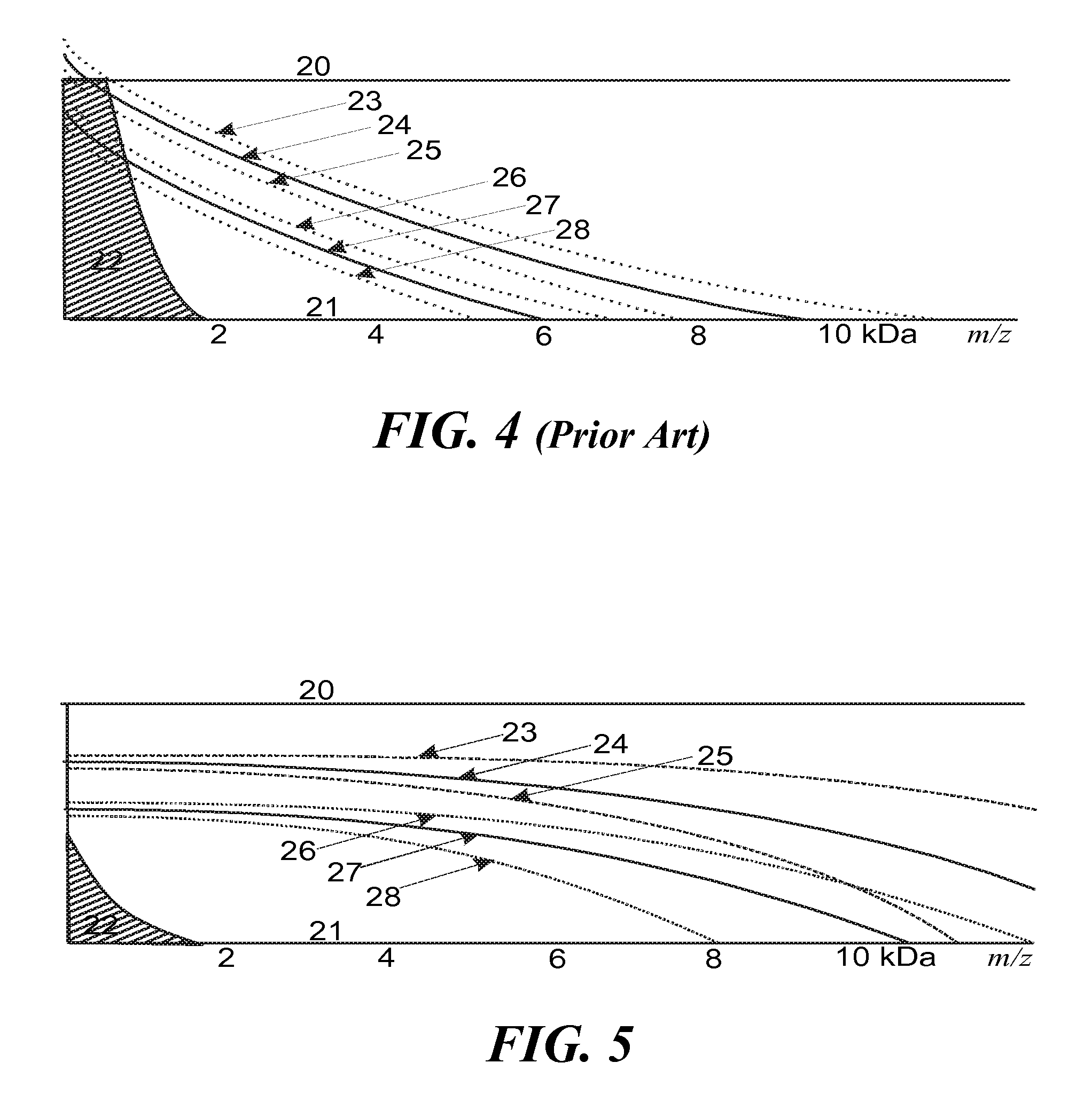Protein sequencing with MALDI mass spectrometry
a mass spectrometry and protein technology, applied in the direction of instruments, particle separator tube details, separation processes, etc., can solve the problems of insufficient modern demands, no longer manufactured automatic edman sequencers, and inability to work effectively, so as to achieve the effect of little computation
- Summary
- Abstract
- Description
- Claims
- Application Information
AI Technical Summary
Benefits of technology
Problems solved by technology
Method used
Image
Examples
Embodiment Construction
[0039]While the invention has been shown and described with reference to a number of embodiments thereof, it will be recognized by those skilled in the art that various changes in form and detail may be made herein without departing from the spirit and scope of the invention as defined by the appended claims.
[0040]The invention provides basically a method for the acquisition of ISD fragment ion spectra that allows the sequence of amino acids in the range below 1000 dalton to be read, which was not possible hitherto. In this method, the samples are prepared with suitable matrix substances like 1,5-DAN and by irradiating the samples with short UV laser pulses with a preferred maximum duration of one nanosecond. The UV laser beam should have a spatial profile with a multitude of small spots with diameters below ten micrometers each (“smart beam”). Series of individual spectra are added to a sum spectrum, as usual.
[0041]To extend the measurement towards higher ISD fragment ion masses, t...
PUM
 Login to View More
Login to View More Abstract
Description
Claims
Application Information
 Login to View More
Login to View More - R&D
- Intellectual Property
- Life Sciences
- Materials
- Tech Scout
- Unparalleled Data Quality
- Higher Quality Content
- 60% Fewer Hallucinations
Browse by: Latest US Patents, China's latest patents, Technical Efficacy Thesaurus, Application Domain, Technology Topic, Popular Technical Reports.
© 2025 PatSnap. All rights reserved.Legal|Privacy policy|Modern Slavery Act Transparency Statement|Sitemap|About US| Contact US: help@patsnap.com



